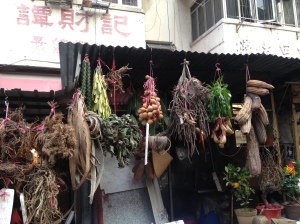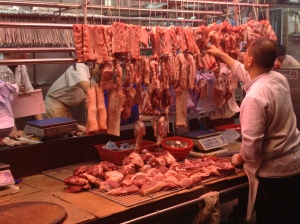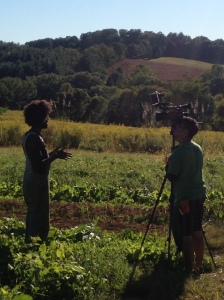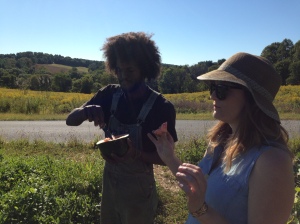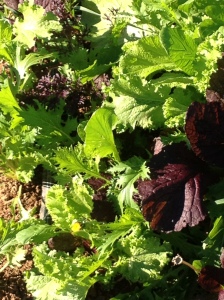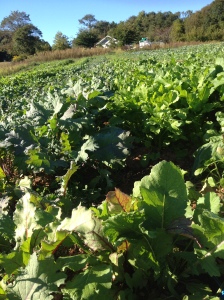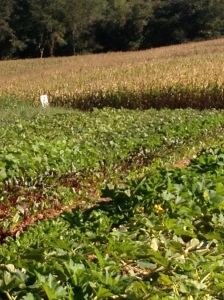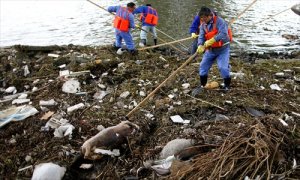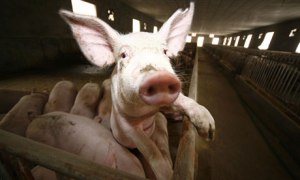The China Cuisine Association (CCA) is in the midst of their second attempt to get Chinese food listed on UNESCO’s ‘Intangible Cultural Heritage of Humanity’ list. After the first try failed for being too general, they’re looking for specific suggestions. So I wrote this open proposal, urging the CCA to consider Chinese pork for their application, but from a perspective that suggests how agro-biodiversity and food traditions are intimately linked. My proposal includes pigs, pork, and sustainable farming. More precisely: Chinese indigenous pig breeds, the fatty pork and related culinary traditions that come from them, and the sustainable agricultural practices that farmers in China have used for millennia to raise them. This approach would not only acknowledge and protect (agri)cultural heritages that can offer guidance for addressing some of today’s most pressing problems, it would also urge a healthy dose of moderation as part of the project of modernization. In the context of converging food, climate, energy, and environmental crises, these are things we desperately need. See the full proposal below.
PDF: Schneider Open Proposal to the CCA August 2014
Full Text:
Chinese Indigenous Pigs, Fatty Pork, and Sustainable Agricultural Practices (or Pigs, Pork, and Practice)
An Open Proposal to the China Cuisine Association for their ‘UNESCO Intangible Cultural Heritage of Humanity’ Application
by Mindi Schneider, PhD
Assistant Professor of Agrarian, Food and Environmental Studies International Institute of Social Studies, The Hague, Netherlands
I would like to openly propose to the China Cuisine Association (CCA) that they consider using Chinese pigs, pork, and sustainable agricultural practices for their application to UNESCO’s ‘Intangible Cultural Heritage of Humanity’ list. One of the central aims of the UNESCO designation is to protect important cultural heritages and raise awareness about them worldwide. Chinese indigenous pig breeds, the fatty pork and related culinary traditions that result, and the sustainable agricultural practices that farmers in China have used for millennia to raise pigs and pork deserve, and urgently need, such protection and publicity. Here’s why:
We find ourselves in a time when the global community must deal with the convergence of food, climate, energy, and environmental crises. Agriculture is at the heart of each of these issues individually, and as they relate to one another. On the one hand, decades of corporate-led industrial agricultural development have polluted water, land, air, and human bodies across the globe. This chemical-and resource- intensive form of production also contributes massive amounts of greenhouse gases to the atmosphere, while it robs soils and communities of nutrients, nutrition, and food and agriculture decision-making capacity. On the other hand, locally-situated small-scale production offers the best hope for reversing these trends and ameliorating the linked crises. Research is increasingly conclusive on this point, even as the political an economic winds continue blow in direction of industrial agriculture.
China’s food and agricultural systems contribute to these global problems. However, China can also be an important part of their solution. The country’s agri-culture is based on centuries of accumulated knowledge about low-input, low-pollution, and low-carbon agricultural practices that produced a rich and diverse culinary culture. On this basis, I propose that sustainable farming and sustainable agrifood systems in China need to be preserved and protected for China and for the world. Of particular importance is the sustainable production of pigs and pork, the country’s most culturally significant form of meat.
Over the past 30 years, China has increasingly adopted industrial agricultural methods to increase production and to ‘modernize diets.’ As a result, the country is now plagued by a host of agriculture-related environmental and social crises. Chief among these is water pollution from industrial livestock farms, as billions of tonnes of untreated manure flow into the country’s streams, rivers, lakes, and ecosystems each year. Manure from large-scale pork and poultry feeding operations is, in fact, the largest source of water pollution in China today. The pollution increases in tandem with rising rates of meat and poultry consumption, killing aquatic life, disrupting water cycles, and poisoning drinking water.
It is important to emphasize that industrial livestock pollution isn’t unique to China. (In August 2014, a toxic algae bloom near Toledo, Ohio, USA left 400,000 people without drinking water. In Ohio, industrial livestock pollution wasn’t the only culprit, but it was certainly an important causal factor.) Similarly, China isn’t alone in the challenges it faces with antibiotic-resistant disease-causing organisms, declining livestock and plant species diversity, agrochemical poisoning of soil and water, and increased greenhouse gas emissions from all phases of industrial livestock production. Nor is it unique in the health and agrarian issues that result, including pollution-related cancers, diet-related diseases, corporate concentration, and struggles for small-scale farmers to compete with growing corporate power. Indeed, these are crises endemic to industrial livestock systems in general, occurring everywhere such systems touch down, and creating and/or exacerbating the grave socio-environmental challenges that are coming to define our moment in human history.
It is also important to recognize and emphasize that what is unique to China, and what absolutely needs to be protected and publicized, is the long history of small-scale, intensive agricultural practice that has fed a dense population without degrading local resources or changing climates for centuries. It is well documented that China has perhaps the longest unbroken history of what might be called ‘sustainable agriculture.’ China today, and the world more broadly, has much to learn from this history. But with the march of industrial production across ever broader swathes of the country and the globe, it’s a history that now more than ever needs to be protected.
My proposal for a three-part UNESCO cultural heritage application on pigs, pork, and practice is based on the following three considerations:
(1). Sustainability
China’s indigenous pig population is a precious genetic resource. Pigs were domesticated from wild boars in southern China as early as 10,000 years ago, and more extensively throughout other parts of the country 6-7,000 years ago. Millennia of animal husbandry produced a genetically diverse range of locally adapted indigenous pig breeds with characteristics such as high prolificacy (large litters) and juicy, flavorful pork. When the Chinese Academy of Agricultural Sciences undertook the first national survey of indigenous livestock in 1960, researchers found more than 100 indigenous pig breeds, which ranged from the extreme northeast of modern day Heilongjiang Province, to the Tibetan Plateau, and all places in between.
Today, indigenous pigs are being replaced by exotic breeds. By one expert estimate, more than 90% of all the pork in China – which is half of all the pork in the world – is produced from imported breeds, either as pure lines or hybrids. Indigenous pigs are raised on conservation farms, but rarely produced for use. This presents a grave threat to genetic diversity, which is crucial for disease resistance, and for the future of livestock production.
At the same time that indigenous breeds are being replaced, so too are the production systems used for centuries to raise them. Traditionally, virtually all farm household across China raised at least one or two pigs each year. They did so on about a half acre of land, using locally occurring or produced feedstuffs to make pork for holidays and celebrations, and manure to fertilize crops for consumption and/or sale. This production system was neither resource-intensive nor pollution- and carbon-extensive. It didn’t contribute to utopic or materially rich lifestyles, but it did contribute important knowledge and practice about how to produce food in a way that sustains socio-ecosystems. This knowledge is a basis upon which a different kind of ‘modern development’ can proceed, to improve lives and livelihoods in rural China while providing guides for making urban consumption more sustainable.
Today, smallholder systems are under constant threat. Large-scale concentrated livestock feeding operations are growing in both number and scale. They rely on commercial feed, much of which is produced from North and South American soybean imports. The breeds in this system have changed, the feeds have changed, the ownership and decision-making processes have changed, and the amount and meaning of manure has changed to become a water pollution crisis. At the same time, the form of the pork has also, and importantly, changed.
(2). Culinary and Cultural Traditions
Pigs fed on kitchen and farm scraps, and on coarse feeds like sweet potato vines and other herbaceous plants, produce a high ratio of fat to lean meat, as their diets are composed primarily of carbohydrates, rather than protein. The practices of China’s smallholder farmers, therefore, resulted in a particular kind of pork with thick layers of fat: this is the pork at the heart of Chinese culinary traditions, and the pork that was important to Chinese diets when grains and root crops were the primary source of calories. Most people throughout most of China’s long history, ate pork only once or twice a year during New Year’s celebrations in the spring, and variously at weddings, birthdays, and funerals. The pigs slaughtered at these events also provided lard for cooking long after the fact. Fatty pork was the basis for pork dishes and styles of cooking, and it continues to be the culturally preferred and treasured form.
Today, as industrial livestock systems produce leaner pork, people mourn the loss of flavor and texture. As fat is now of the intramuscular variety, rather than the stacked and layered variety, dishes like Chairman Mao’s favorite hongshaorou (soy-braised pork) are difficult to achieve in their familiar form. Fatty pork should be preserved as an important cultural heritage.
(3). Moderation as part of Modernization
The context within which people have historically eaten fatty pork in China is, of course, important. During the centuries when the population practiced small-scale, dispersed, local forms of agriculture, meat consumption in general and pork consumption in particular was peripheral in diets. A comprehensive survey from early in the 20th century estimated that before 1949, most farmers (who comprised most of the population) derived only 1% of their food energy from meat. In this agrifood situation, fatty pork made sense as a source of protein and of needed fat.
Today, meat consumption in China has skyrocketed. Compared to 1980, Chinese people on the whole eat four times as much meat, or roughly 54 kg of meat per person per year. Pork consumption has doubled in the past 20 years to the current level of almost 40 kg/person/year. This growth in uneven, with urban consumers eating about twice as much as their rural counterparts, with variation between and among income groups as well.
Along with this massive growth has come massive public health challenges: obesity, heart disease, diabetes, and a range of diet-related cancers plague the country. Food safety tops the list of public safety concerns, with direct connections to industrial pork production. And the heavily polluted waterways that brim with manure, producing toxic algae blooms, present another public health disaster. These issues are the result of not only so-called modern pork (indeed, diet-related diseases result from a mix of food and nutrition factors, of which meat is one piece), but also of the level of consumption.
Preserving fatty pork, and the culinary traditions associated with it, can at the same time promote moderation as part of modernization. Surely, if Chinese consumers were to eat fatty pork at the rate they currently eat leaner industrial pork, this would present further health challenges. However, promoting the tradition of reserving pork for special occasions would solve many problems in China and in the world today: less manure to pollute, fewer greenhouse gasses to change the climate, more production from indigenous pigs, less production using imported feedstuffs, healthier human diets, and better public health. At the same time, Chinese culinary traditions would be preserved, as would Chinese sustainable agricultural traditions. These are things that China needs to protect, and that the world needs desperately to learn from.
China’s pigs, pork, and sustainable agricultural practices should be added to UNESCO’s ‘Intangible Cultural Heritage of Humanity’ list. China needs this designation. And the world needs this designation.

